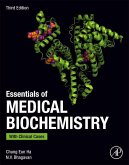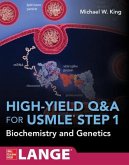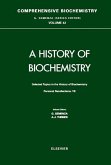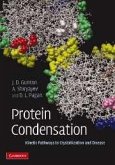Principles of Biochemistry provides a concise introduction to fundamental concepts of biochemistry, striking the right balance of rigor and detail between the encyclopedic volumes and the cursory overview texts available today. Widely praised for accuracy, currency, and clarity of exposition, the Fifth Edition offers a new student-friendly design, an enhanced visual program, new Application Boxes, contemporary research integrated throughout, and updated end-of-chapter problems. Features + Benefits
Unique focus on principles and underlying themes of biochemistry fosters understanding rather than simply relating facts. By first establishing a framework of key principles then reinforcing them with the careful use of illustrative examples, the Fifth Edition encourages and fosters true understanding of the relationship between structure and function, instead of memorization.
Balanced coverage of biomolecular structure/function, metabolism, and molecular biology provides instructors with thorough, consistent coverage of all the topics they cover in class.
Strong chemical focus, including mechanisms of reactions and attention to the physical chemistry of biomolecules, explains how and why reactions happen so students can understand more and memorize less.
Emphasis on oxidation-reduction reactions expands coverage of these important reactions and explains electron gain and loss in a simple and straightforward manner.
The Evolutionary approach to biochemistry explains the fundamental strategies of metabolic pathways from the perspective of how they evolved.
Authoritatively written by a collaborative team of experts, the text provides clear, lucid explanations and accurate science for all areas of biochemistry. (Ex. DNA replication.)
Chapters on amino acid, lipid, and nucleotide metabolism stress core concepts enable students to leave the course with a solid understanding of the key issues of metabolism without losing sight of the forest for the trees.
Excellent coverage of gene expression includes the structure of RNA polymerase, the structure of the ribosome, genome organization, repair mechanisms, regulation of transcription and translation, and the structure and evolution of aminoacyl tRNA synthetases.
Boxes focus on interesting science, commercial applications of biochemistry, and medical relevance:
Boxes on enzyme evolution, enzyme microheterogeneity, sources of electrons in redox reactions, and the origins of common names help stimulate student’s interest in the science of biochemistry.
Boxes on genetically modified foods and improving crop production illustrate some of the commercial applications of biochemistry.
Boxes on ABO blood groups, statins, and common painkillers illustrate principles described in the text using clinical examples.
(NOTE: Each chapter concludes with Summary, Problems, and Selected Reading.)
Part One: Introduction
1 Introduction to Biochemistry
2 Water
Part Two: Structure and Function
3 Amino Acids and the Primary Structures of Proteins
4 Proteins: Three-Dimensional Structure and Function
5 Properties of Enzymes
6 Mechanisms of Enzymes
7 Carbohydrates
8 Coenzymes and Vitamins
9 Lipids and Membranes
Part Three: Metabolism and Bioenergetics
10 Introduction to Metabolism
11 Glycolysis
12 Gluconeogenesis, The Pentose Phosphate Pathway, and Glycogen Metabolism
13 The Citric Acid Cycle
14 Electron Transport and ATP Synthesis
15 Photosynthesis
16 Lipid Metabolism
17 Amino Acid Metabolism
18 Nucleotide Metabolism
Part Four: Biological Information Flow
19 Nucleic Acids
20 DNA Replication, Repair, and Recombination
21 Transcription and RNA Processing
22 Protein Synthesis
Hinweis: Dieser Artikel kann nur an eine deutsche Lieferadresse ausgeliefert werden.
Unique focus on principles and underlying themes of biochemistry fosters understanding rather than simply relating facts. By first establishing a framework of key principles then reinforcing them with the careful use of illustrative examples, the Fifth Edition encourages and fosters true understanding of the relationship between structure and function, instead of memorization.
Balanced coverage of biomolecular structure/function, metabolism, and molecular biology provides instructors with thorough, consistent coverage of all the topics they cover in class.
Strong chemical focus, including mechanisms of reactions and attention to the physical chemistry of biomolecules, explains how and why reactions happen so students can understand more and memorize less.
Emphasis on oxidation-reduction reactions expands coverage of these important reactions and explains electron gain and loss in a simple and straightforward manner.
The Evolutionary approach to biochemistry explains the fundamental strategies of metabolic pathways from the perspective of how they evolved.
Authoritatively written by a collaborative team of experts, the text provides clear, lucid explanations and accurate science for all areas of biochemistry. (Ex. DNA replication.)
Chapters on amino acid, lipid, and nucleotide metabolism stress core concepts enable students to leave the course with a solid understanding of the key issues of metabolism without losing sight of the forest for the trees.
Excellent coverage of gene expression includes the structure of RNA polymerase, the structure of the ribosome, genome organization, repair mechanisms, regulation of transcription and translation, and the structure and evolution of aminoacyl tRNA synthetases.
Boxes focus on interesting science, commercial applications of biochemistry, and medical relevance:
Boxes on enzyme evolution, enzyme microheterogeneity, sources of electrons in redox reactions, and the origins of common names help stimulate student’s interest in the science of biochemistry.
Boxes on genetically modified foods and improving crop production illustrate some of the commercial applications of biochemistry.
Boxes on ABO blood groups, statins, and common painkillers illustrate principles described in the text using clinical examples.
(NOTE: Each chapter concludes with Summary, Problems, and Selected Reading.)
Part One: Introduction
1 Introduction to Biochemistry
2 Water
Part Two: Structure and Function
3 Amino Acids and the Primary Structures of Proteins
4 Proteins: Three-Dimensional Structure and Function
5 Properties of Enzymes
6 Mechanisms of Enzymes
7 Carbohydrates
8 Coenzymes and Vitamins
9 Lipids and Membranes
Part Three: Metabolism and Bioenergetics
10 Introduction to Metabolism
11 Glycolysis
12 Gluconeogenesis, The Pentose Phosphate Pathway, and Glycogen Metabolism
13 The Citric Acid Cycle
14 Electron Transport and ATP Synthesis
15 Photosynthesis
16 Lipid Metabolism
17 Amino Acid Metabolism
18 Nucleotide Metabolism
Part Four: Biological Information Flow
19 Nucleic Acids
20 DNA Replication, Repair, and Recombination
21 Transcription and RNA Processing
22 Protein Synthesis
Hinweis: Dieser Artikel kann nur an eine deutsche Lieferadresse ausgeliefert werden.








